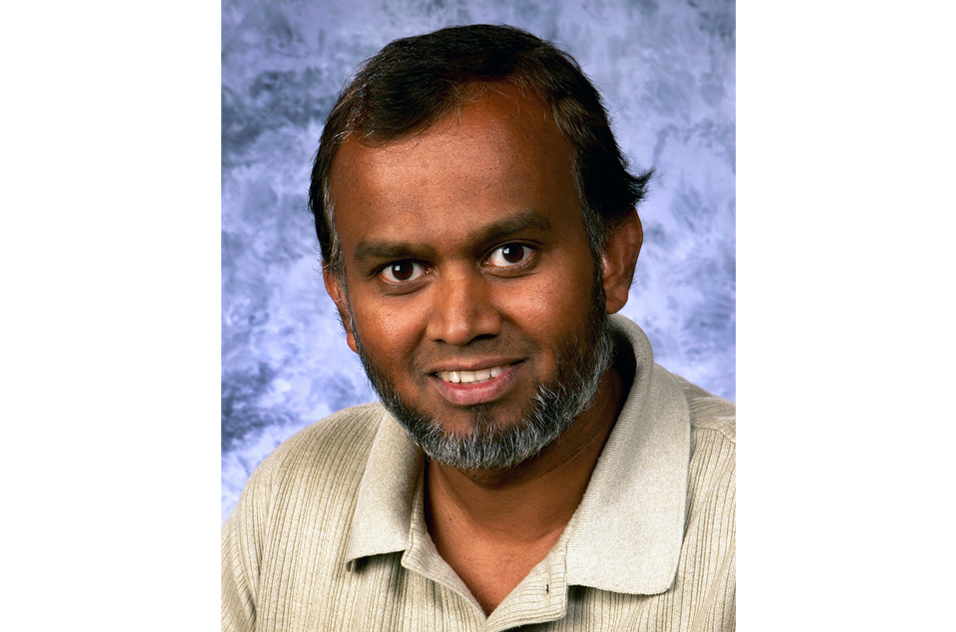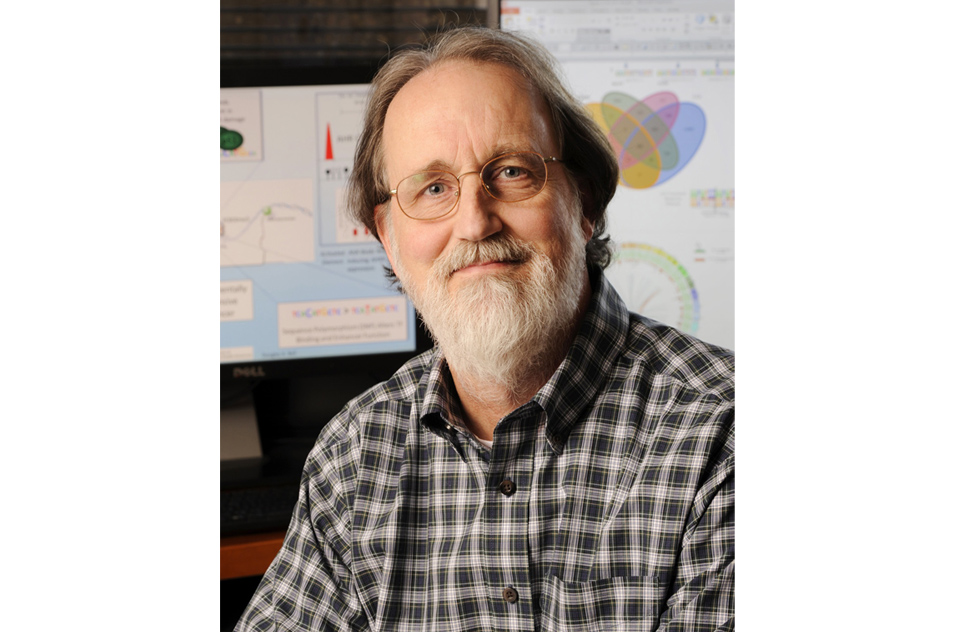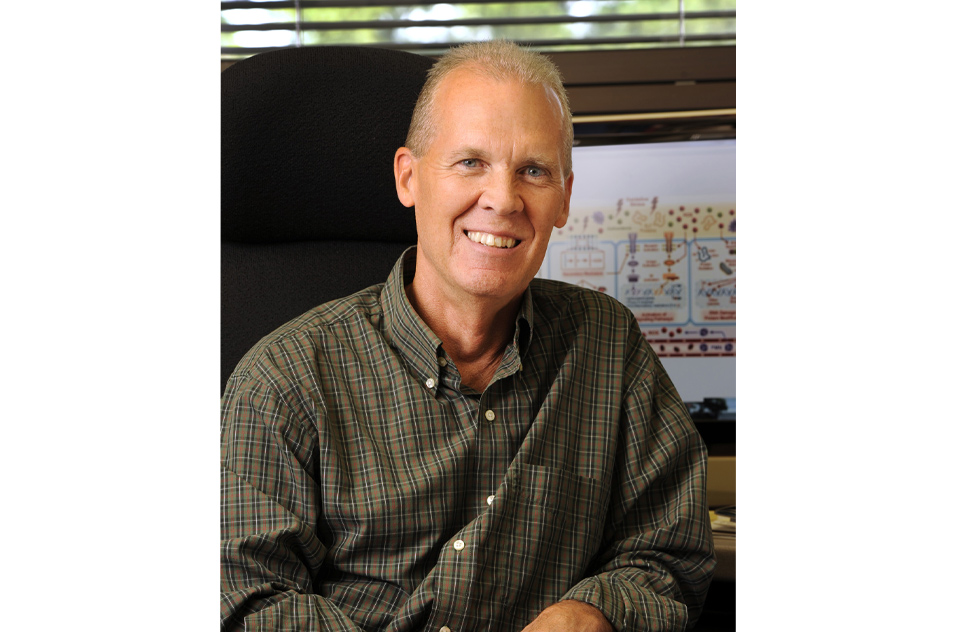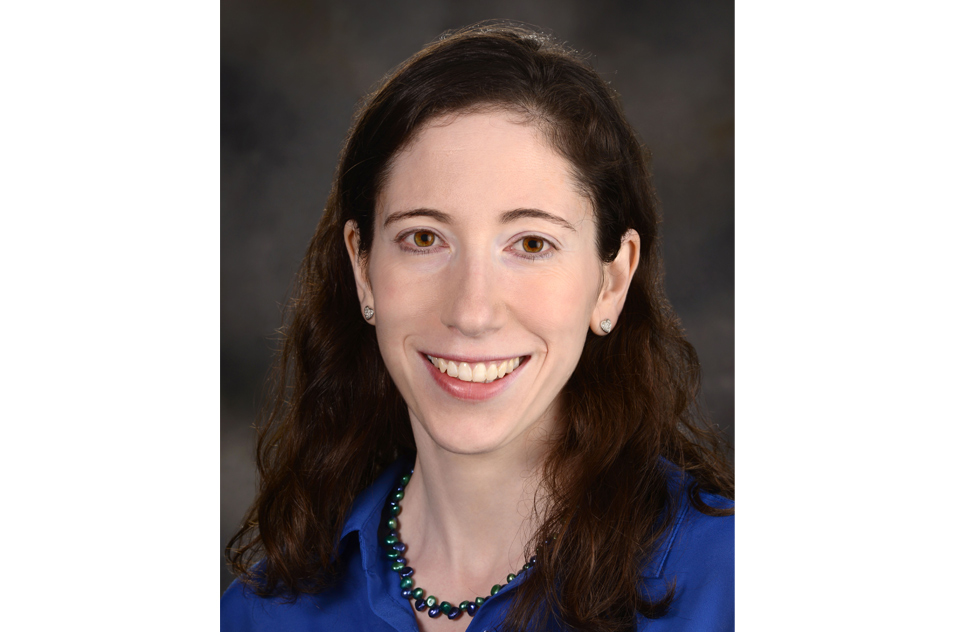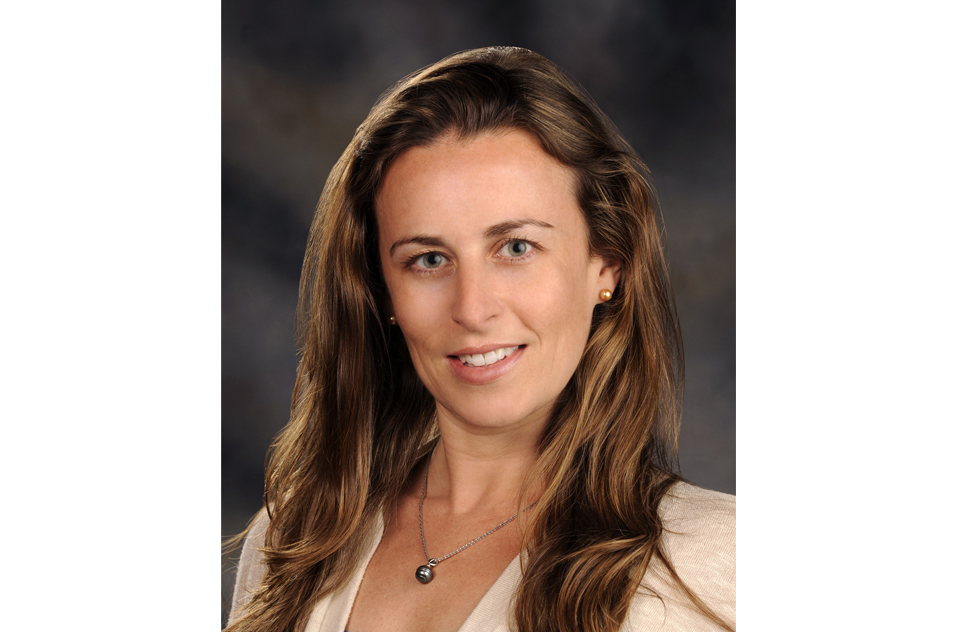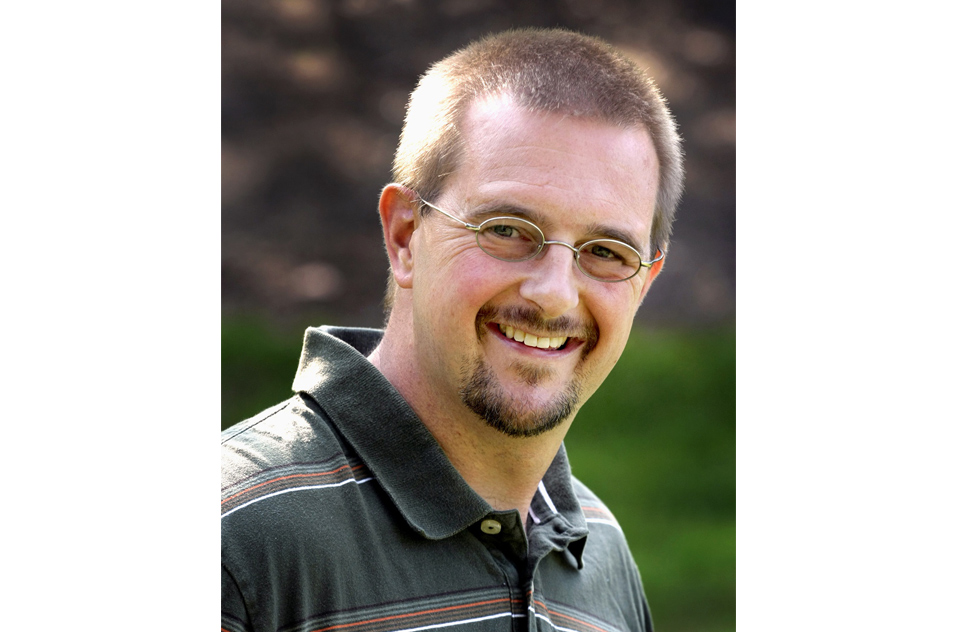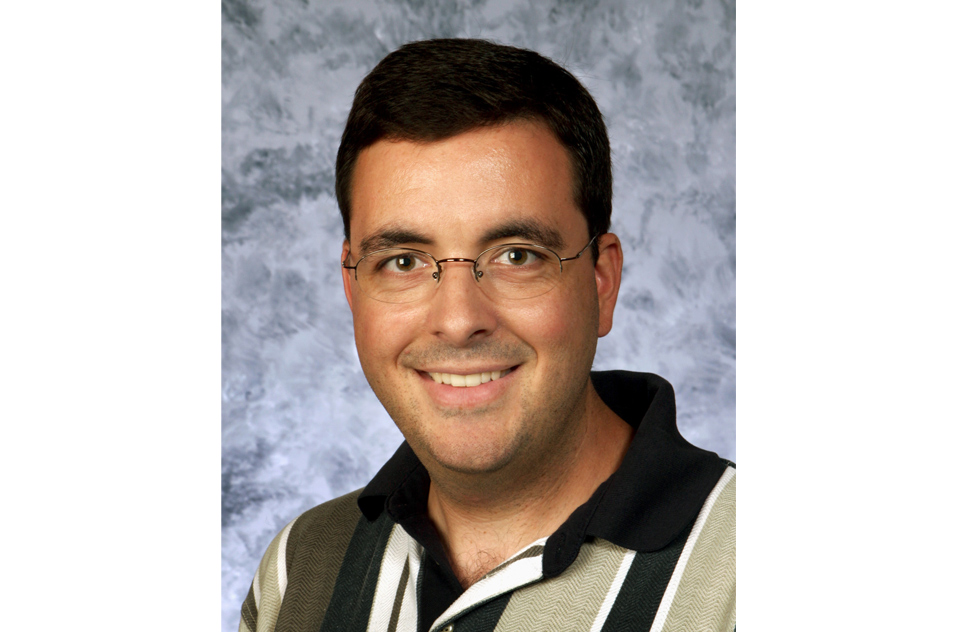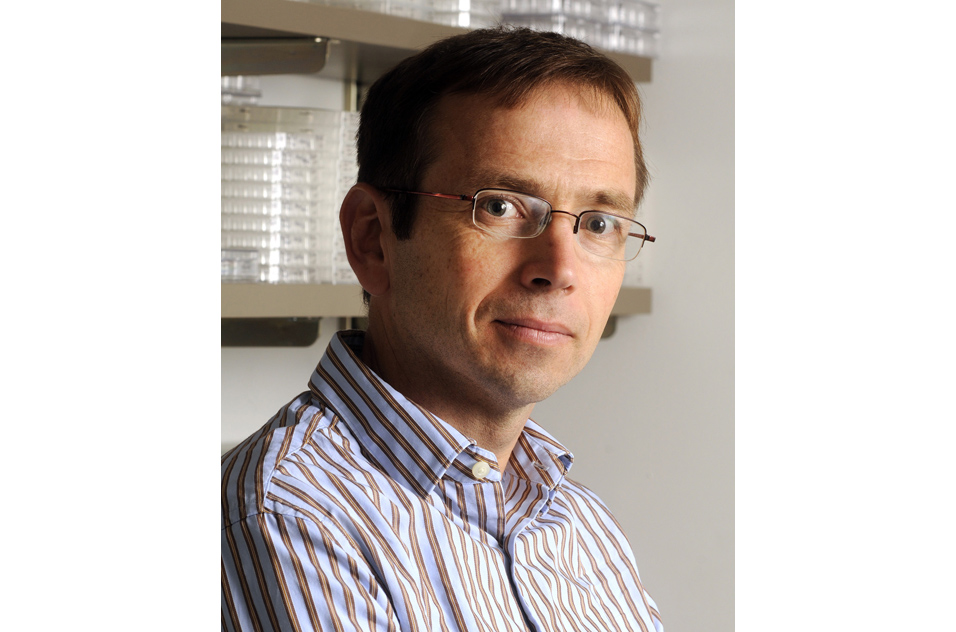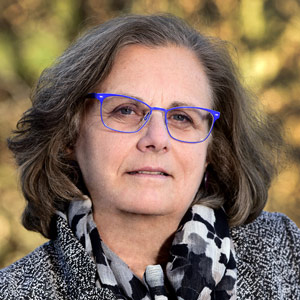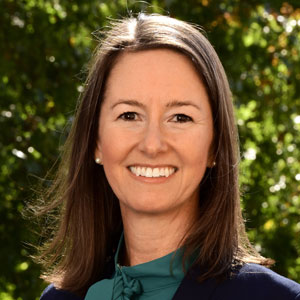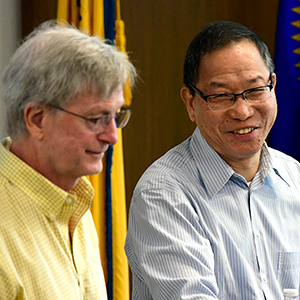The April issue of the Environmental Factor featured several projects underway at NIEHS seeking to make headway against the SARS-CoV-2 virus, which causes COVID-19. This month, we offer a roundup of the diverse projects our researchers are doing.
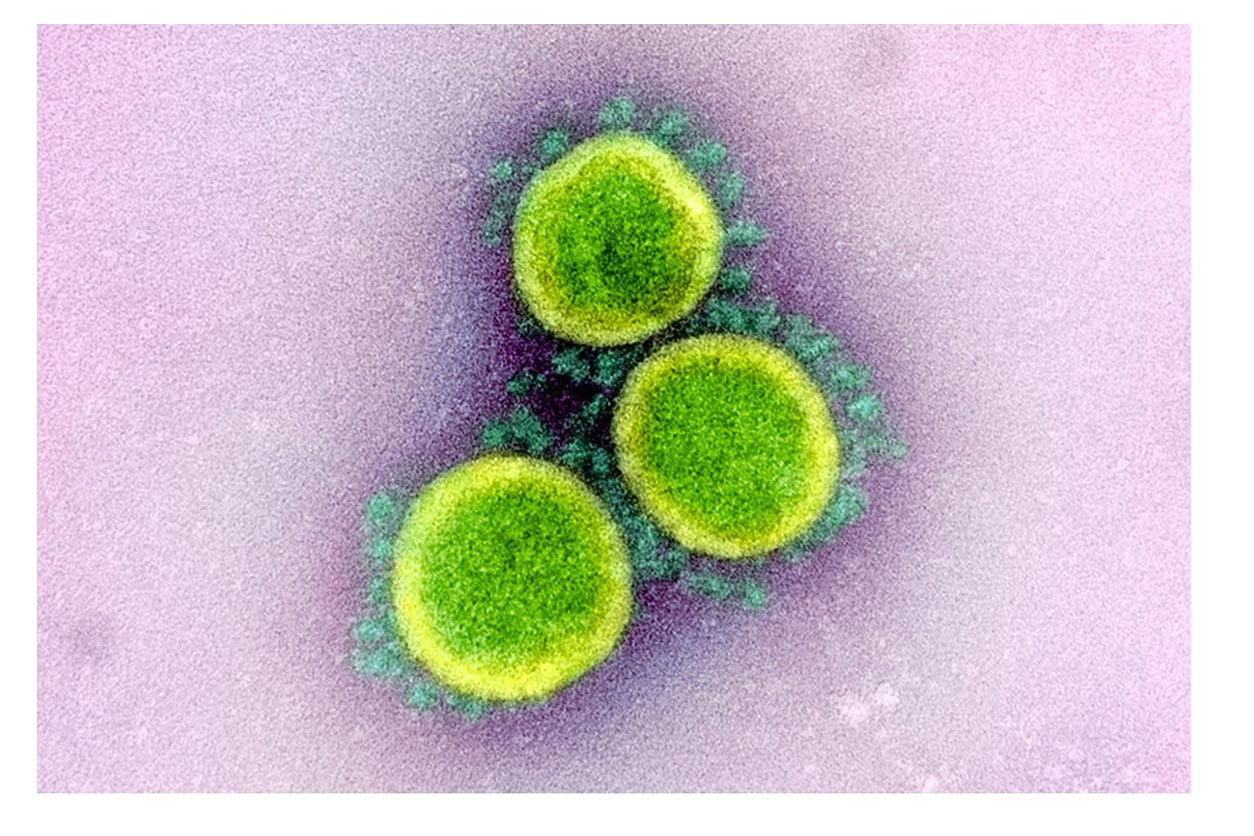 The coronas that gives coronaviruses their name are visible in this transmission electron micrograph of SARS-CoV-2 virus particles isolated from a patient. (Photo courtesy of National Institutes of Health)
The coronas that gives coronaviruses their name are visible in this transmission electron micrograph of SARS-CoV-2 virus particles isolated from a patient. (Photo courtesy of National Institutes of Health)Structural studies
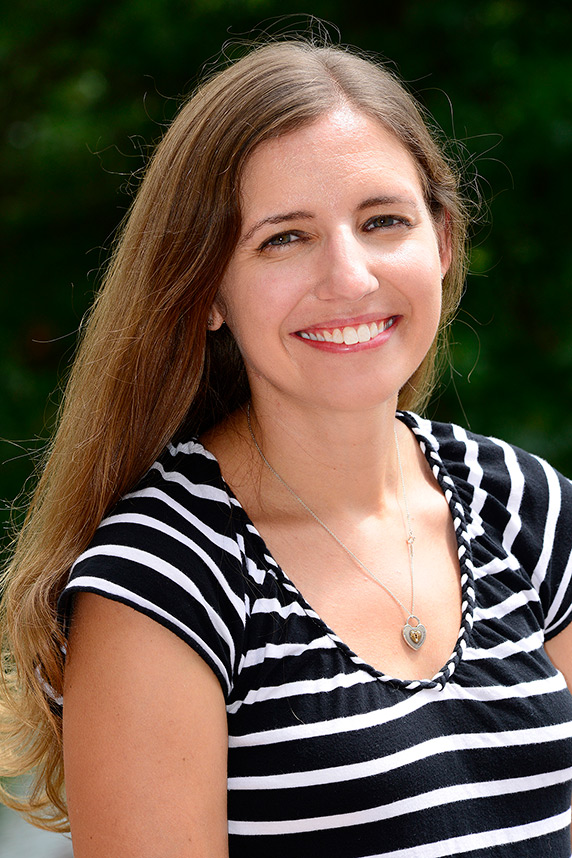 Stanley leads the NIEHS Nucleolar Integrity Group. (Photo courtesy of Steve McCaw)
Stanley leads the NIEHS Nucleolar Integrity Group. (Photo courtesy of Steve McCaw)Both Robin Stanley, Ph.D., and Lalith Perera, Ph.D., use cryo-electron microscopy (cryo-EM) in their work.
Stanley uses cryo-EM to see how COVID-19 RNA processing factors bind to small molecule inhibitors.
Perera employs computer simulations to model how the structure of SARS-CoV-2 differs depending on whether samples are prepared in water or at the interface of air and water.
Lung injury
By examining the immune system of smokers before and after infection, Douglas Bell, Ph.D., will study the interaction between the effects of previous smoking and COVID-19 infection. Smokers with a COVID-19 infection appear to be at higher risk for illness and mortality.
Steve Kleeberger, Ph.D., has demonstrated that a protein found in breast milk and secreted fluids like saliva and tears inhibits respiratory syncytial virus disease both in vivo and in vitro. He plans to determine whether this protein reduces or blocks the ability of SARS-CoV-2 to infect human lung primary and cancer cells.
Mike Fessler, M.D., wants to understand the combined roles of epithelial membrane protein-2 (EMP2) and angiotensin-converting enzyme-2 (ACE2) in a SARS-CoV-2 lung infection. ACE2 is the membrane receptor that allows SARS-Cov-2 to enter a cell, so understanding how these proteins work together could shed light on lung injury that occurs with COVID-19.
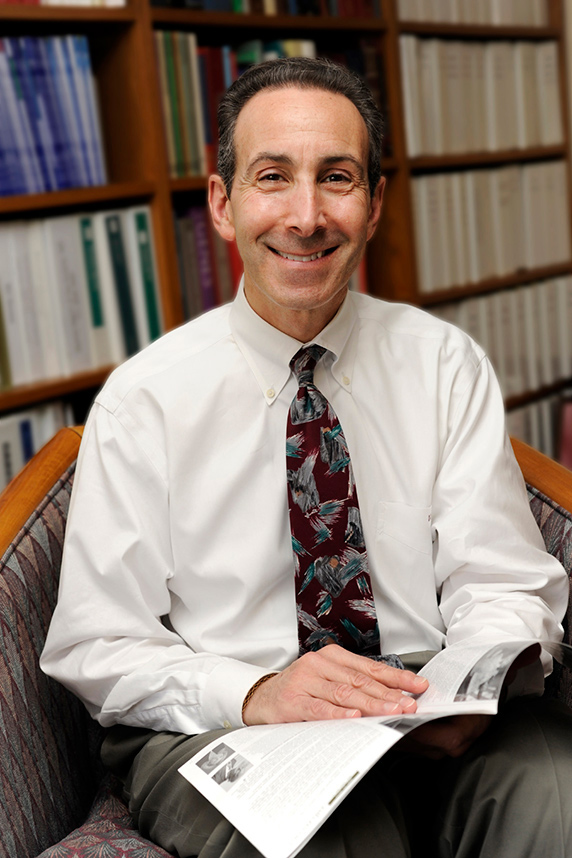 Zeldin is NIEHS Scientific Director and head of the Environmental Cardiopulmonary Disease Group. (Photo courtesy of Steve McCaw)
Zeldin is NIEHS Scientific Director and head of the Environmental Cardiopulmonary Disease Group. (Photo courtesy of Steve McCaw)Darryl Zeldin, M.D., working in collaboration with scientists at the National Institute of Dental and Craniofacial Research, also studies the ACE2 receptor.
He is interested in whether the addition of a sugar to the SARS-CoV-2 spike protein, a process called O-glycosylation, influences the binding of ACE2 and disease progression and severity.
Other coronavirus health impacts
Like Zeldin and Fessler, Natalie Shaw, M.D., is interested in the ACE2 membrane receptor.
Shaw studies mutations in a gene called SMCHD1, which causes the congenital absence of the nose, or arhinia. Preliminary studies suggest that ACE2 may be a target of SMCHD1.
In collaboration with the NIEHS Integrative Bioinformatics Group, Francesco DeMayo, Ph.D., will examine the impact of ACE2 and COVID-19 on human reproduction.
Epidemiology of COVID-19
Dale Sandler, Ph.D., is partnering with a team at Harvard University on a COVID Symptom Tracker app for the Coronavirus Pandemic Epidemiology (COPE) Consortium. Once completed, the app will allow her group to study factors that affect susceptibility, symptoms, and severity of infection.
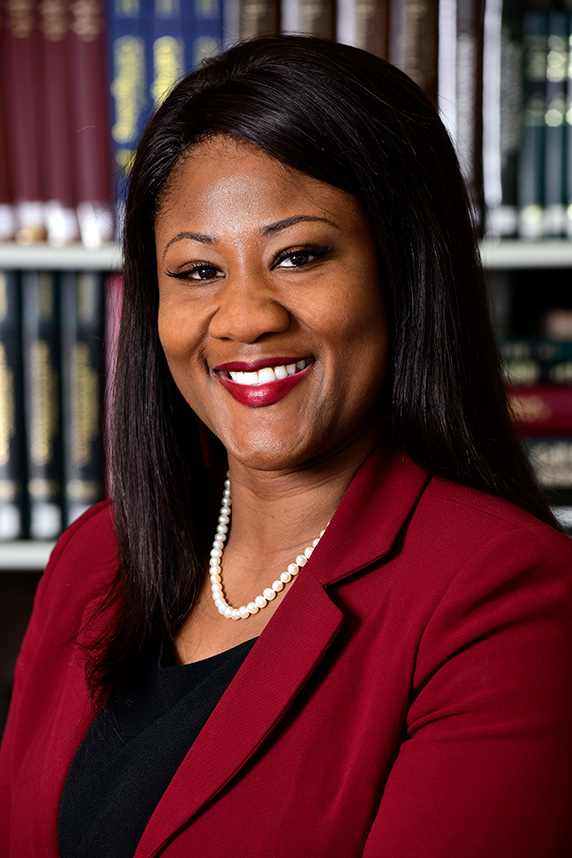 Jackson leads the Social and Environmental Determinants of Health Equity Group. (Photo courtesy of Steve McCaw)
Jackson leads the Social and Environmental Determinants of Health Equity Group. (Photo courtesy of Steve McCaw)Chandra Jackson, Ph.D., is working with colleagues at the National Institute on Minority Health and Health Disparities to develop a national survey to capture COVID-19 related events and racial and ethnic disparities.
Stavros Garantziotis, M.D., wants to establish an air liquid interface (ALI) human cell culture model system for SARS-CoV-2. He hopes the new testing system will make it easier to understand the risk of infection among NIEHS staff.
Potential therapeutics
Nicole Kleinstreuer, Ph.D., is working with Garantziotis and the same human cell culture model system to test whether an ACE2-Fc fusion protein could be a novel COVID-19 therapeutic.
A hypothesis developed by Scott Auerbach, Ph.D., suggests that the naturally occurring antioxidant CoQ10 could be a therapeutic molecule for COVID-19. His data mining exercise found that CoQ10 was a possible regulator of ACE2 in mice. He also plans to work with Garantziotis to see if his finding is reproducible in human bronchial epithelial cells.
Lars Pedersen, Ph.D., and colleagues at the University of North Carolina at Chapel Hill Eshelman School of Pharmacy are studying the ability of heparan sulfate (HS) to block SARS-CoV-2 spike protein binding to cells. Structural studies will be used to examine interactions between HS and the spike protein to help optimize lead candidates for drug development.
Using a mosquito protein that has antiviral properties against enveloped viruses such as Zika, Dengue, and lentivirus, Geoff Mueller, Ph.D., plans to find out if the insect antiviral gut protein AZ1 blocks coronavirus infectivity. Potentially, it could be developed into an antiviral therapy.





